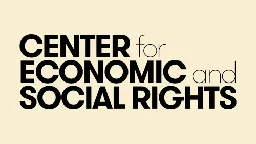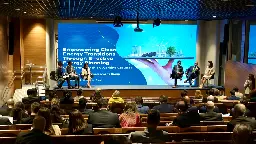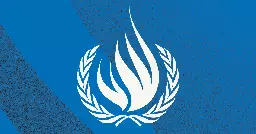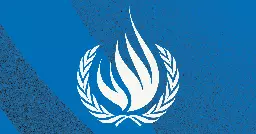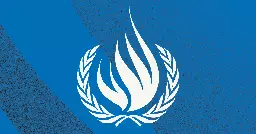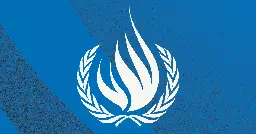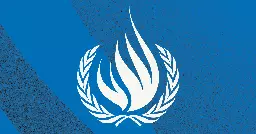Search
SDF Chatter: Human Rights: Key Resources + Key Conversations


This is a work in progress, keep checking back.
-==- Must Read -==-
- UN Universal Declaration of Human Rights
- International Covenant on Economic, Social and Cultural Rights
- Communicating During Contentious Times: Dos and Don'ts to Rise Above the Noise
-==- Should Read -==-
-==- Difficult Conversations -==-
- Are human rights a valid social intervention or harmful?
- Exxon Mobil predicts global temperature increase over 2 degrees Celsius by 2050
- IAEA Presents Sustainable Energy Planning Toolkit to the G20
- Should Artificial Intelligence be given human rights?
- Joe Biden’s Cruel Border Shutdown Follows in Clinton and Obama’s Footsteps Too
OHCHR overview on Universal Health Coverage and the Right to Health
> Human rights are fundamental and universal rights inherent to all human beings, regardless of nationality, ethnic origin, age or any other status without which they cannot live a dignified life. These principles should be at the center of all public policies and practices, including, as WHO’s Constitution recognizes, those related to health and health care.9 But human rights norms and standards are not just widely accepted: human rights treaties create specific legal obligations for member states that have ratified them to respect, protect, and fulfil these rights in the development and implementation of laws, policies and programs. The right to the highest attainable standard of physical and mental health10—a right that practically all countries have committed to uphold—articulates numerous concrete obligations for States relevant to UHC, thus making UHC an expression of an important dimension of this right. Among others, it requires that States ensure the availability, accessibility, acceptability, and quality of health services. Some of these obligations and principles are discussed below.
Human Rights FAQs
> What are human rights? How do they relate to the economy? Why are they a powerful tool for systemic transformation? Here, you can find short, digestible answers to commonly asked questions about human rights and the economy.
A Human Rights-Based Approach to Content Governance
> The question of how social media platforms can respect the freedom of expression rights of users while also protecting others from harm is one of the most pressing challenges of our time. Taking a human rights-based approach to this challenge will help ensure alignment with internationally agreed norms and consistency across borders—but what does a human rights-based approach to content mean in practice? We believe that the elements described in this paper constitute the foundations of a human rights-based approach to content governance. We have arrived at these elements by combining the UN Guiding Principles on Business and Human Rights (UNGPs) with a consideration of the various human rights principles, standards, and methodologies upon which the UNGPs were built. We believe that a human rights-based approach to content governance can be segmented into four parts: > 1. Content policy—statements about what content is and is not allowed on a social media platform, as well as about the visibility of content. > 2. Content policy implementation—how content decisions are executed in practice. > 3. Product development—how new features, services, and functionalities are introduced and evolve. > 4. Tracking and transparency—how the outcomes and effectiveness of a human rights-based approach is measured and communicated. Further, we believe that a special focus on engagement with affected stakeholders and the needs of vulnerable groups is essential across all four parts.
> There are two important features to highlight about these four parts taken in combination.
> First, these four parts constitute a robust framework of ongoing human rights due diligence that enable content decisions to be made thoughtfully, deliberately, and grounded upon rights-based analysis, rather than “on the go” or according to the whim of the moment. They emphasize that process matters as much as the decision itself— and that while different companies may reach different conclusions, content decisions should be intellectually consistent, defensible on human rights grounds, and conveyed transparently.
> Second, these four parts encompass more than just what content is and is not allowed on a platform—our approach assumes that international human rights law provides an overall framework for decision-making and action, not simply a “copy and paste” set of content rules for companies to follow.
Enhancing the quality and effectiveness of mediation efforts through human rights
Executive Summary
> Human rights and mediation are inextricably linked. Both fields aim to prevent conflicts or bring them to an end by addressing core conflict drivers, including human rights violations. Nevertheless, human rights and mediation are sometimes portrayed as incompatible. This practice note outlines why such misconceptions exist and what human rights can tangibly offer the mediation field. It shows that human rights can serve as a practical problem-solving tool to support mediation strategies and assist negotiating parties to reach inclusive and sustainable agreements. Human rights are at the core of the United Nations. While this normative grounding is sometimes cast as a disadvantage when the Organization mediates, it is also a powerful source of legitimacy – particularly in the eyes of civilians. This note highlights that the human rights framework enables mediators to achieve goals such as addressing the root causes of conflicts, promoting inclusivity and participation, and ensuring accountability.
> Mediators and other practitioners can make use of human rights to enhance the quality and effectiveness of mediation efforts, including by opening space for political negotiations, strengthening ongoing peace processes and reinvigorating stalled efforts. Human rights can set the ground for facilitated negotiations, for example, by establishing channels of communication; improving the negotiations context; allowing parties to test conflict resolution efforts; enhancing the credibility of the United Nations prior to mediation; offering mediators networks of interlocutors; improving the quality of conflict analysis; incentivizing parties to initiate negotiations on sensitive issues, including accountability for past crimes; providing entry points for conflict prevention and de-escalation; and building confidence between parties.
> Once mediation efforts begin, human rights can further contribute by providing principles and standards within which to frame agenda issues; leveraging the power of economic, social and cultural rights; improving the inclusivity of processes, such as by enhancing the participation in peace talks of women, victims and survivors, Indigenous Peoples, minorities and other marginalized groups; reframing political grievances in human rights terms; drawing on the more neutral characterizations of conflict situations with which the international human rights system engages; helping to navigate the gaps between the parties’ framing of human rights and international standards; finding solutions to critical issues, including justice and accountability for past crimes; “bracketing” complex issues to allow parties to make progress on other issues; and fostering agreements that are sustainable and can be implemented.
> This practice note is an outcome of a joint project between the Department of Political and Peacebuilding Affairs (DPPA) and the Office of the United Nations High Commissioner for Human Rights (OHCHR) to better understand the constructive role that human rights can play in supporting mediation efforts, with the aim of improving the effectiveness of United Nations mediation, good offices and preventive diplomacy efforts.1 The project also seeks to enhance collaboration between the United Nations peace and security and human rights pillars, in line with the Secretary-General’s Call to Action for Human Rights.
IAEA Presents Sustainable Energy Planning Toolkit to the G20
> Decarbonization of the energy, transportation and industrial sectors by 2050 is a formidable challenge, and getting there will require significant use of nuclear power. But whether nuclear power figures into a country’s future energy mix or not, rigorous planning is needed to determine the clean energy composition that will work best depending on country-specific factors.
> The publication, entitled ‘From Knowledge to Action: IAEA Toolkit for Sustainable Energy Planning’, was presented during a side event held on the margins of a meeting of the G20’s Energy Transitions Working Group in Belo Horizonte, Brazil.
OHCHR | Report on the Right to Life and + the Right to Adequate Housing
> The fiftieth anniversary of the adoption of the International Covenant on Civil and Political Rights and the International Covenant on Economic, Social and Cultural Rights provides an important opportunity to reflect on the impact of dividing the unified rights in the Universal Declaration of Human Rights into two categories. Of particular importance was the choice to separate the right to life from the right to adequate housing.
> The right to life does not actually belong to one or the other category of human rights. Lived experience illustrates that the right to life cannot be separated from the right to a secure place to live, and the right to a secure place to live only has meaning in the context of a right to live in dignity and security, free of violence.
> The right to adequate housing is too frequently disconnected from the right to life and core human rights values, treated more as a policy aspiration than as a fundamental right which demands timely rights-based responses and access to justice.
Tackling Discrimination against LGBTI people in the private sector: Standards of Conduct for Business
The 5 standards
> RESPECT the human rights of their LGBTI workers, customers and members of the public
> ELIMINATE workplace discrimination against LGBTI employees
> SUPPORT LGBTI staff at work
> PREVENT discrimination and related abuses against LGBTI customers, suppliers and distributors—and insist that business partners do the same
> STAND UP for the human rights of LGBTI people in the communities where they do business
About LGBTI people and human rights
> Discrimination against LGBTI people undermines the human rights principles outlined in the Universal Declaration of Human Rights. Yet discrimination and violence against people in the LGBTI community are all too common. Homophobia, biphobia, transphobia and discriminatory attitudes towards intersex people remain deeply embedded in many cultures around the world.
> In a human rights context, lesbian, gay, bisexual and transgender people face both common and distinct challenges. Intersex people (those born with atypical sex characteristics) suffer some of the same kinds of human rights violations as lesbian, gay, bisexual and transgender people. They also face institutional violence within healthcare systems, with lifelong consequences to their physical and psychological health. Read more about Intersex people, Transgender people, and LGBTIQ+ women and the human rights violations they face.
> All States are obligated under International human rights law to promote and protect the human rights of all persons without discrimination. Yet in many countries, laws against cross dressing are used to punish transgender people on the basis of their gender identity and expression. Additionally, in over 60 countries, discriminatory laws criminalize private, consensual same-sex relationships.
> As a result, LGBT individuals are exposed to the risk of arrest, blackmail, extortion, stigma, discrimination, violence and, in at least six countries, the death penalty.
The human right to adequate housing: Special Rapporteur on the right to adequate housing
> Increasingly viewed as a commodity, housing is most importantly a human right. Under international law, to be adequately housed means having secure tenure—not having to worry about being evicted or having your home or lands taken away. It means living somewhere that is in keeping with your culture, and having access to appropriate services, schools, and employment.
> Too often violations of the right to housing occur with impunity. In part, this is because, at the domestic level, housing is rarely treated as a human right. The key to ensuring adequate housing is the implementation of this human right through appropriate government policy and programmes, including national housing strategies.
Protest is an invaluable way to speak truth to power.
Our right to protest is under attack, threatened by those in power who are scared of the change people can bring.
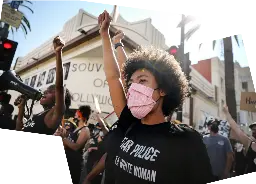
> Is protest a human right?
> When taking part in a protest, a person is exercising a variety of universally recognized human rights.
> As well as the rights to freedom of expression and peaceful assembly, this includes other rights that are essential to enable peaceful protest, including the right to life, to freedom of association, to privacy, and to be free from arbitrary arrest and detention, and from torture and other ill-treatment or punishment.
> Therefore, rather than being codified under a single law or treaty, the right to protest is protected under international human rights law by provisions enshrined in various international and regional treaties guaranteeing each of these distinct yet mutually reinforcing rights. Taken together, they provide protestors with comprehensive protection.
Homelessness and human rights
> "Homelessness is a profound assault on dignity, social inclusion and the right to life. It is a prima facie violation of the right to housing and violates a number of other human rights in addition to the right to life, including non-discrimination, health, water and sanitation, security of the person and freedom from cruel, degrading and inhuman treatment." > - Special Rapporteur on the right to adequate housing (A/HRC/43/43, para.30)
Human rights standards
> Homelessness violates the principle of human dignity enshrined in articles 1 and 22 of the Universal Declaration of Human Rights and in the International Covenants on Civil and Political Rights and Economic, Social and Cultural Rights.
> States have recognized in Article 11 (1) of the International Covenant on Economic, Social and Cultural Rights the right of everyone to an adequate standard of living, including to food, clothing and housing and to the continuous improvement of living conditions. Article 12 states that everyone has the right to the highest attainable standard of health. States must furthermore guarantee according to Article 2 (2) that all economic, social and cultural rights “are exercised without discrimination of any kind as to … national or social origin, property, birth or other status”, the latter includes as well housing status.
OHCHR and the safety of journalists and the issue of impunity
> Freedom of the media is essential to enable democratic, free and participative societies. Journalists and the media are crucial to ensure transparency and accountability for public and governmental authorities. Yet media freedom and the safety of journalists are under threat around the globe.
> In recent years, OHCHR has observed a decline of media freedom in all regions. Various factors demonstrate this decline, including persisting attacks on journalists, on-line and offline, particularly of women journalists; increasing detention of journalists; the use of defamation laws and laws to curb on-line expression; the use of Strategic Lawsuits Against Public Participation Laws (SLAPPS) against journalists; and the targeting of journalists by surveillance technologies.
Compendium of WHO and other UN guidance on health and environment
This compendium provides a systematic compilation of published guidance from WHO and other UN organizations on health and environment.
> The Compendium is a comprehensive collection of available WHO and other United Nations (UN) guidance for improving health by creating healthier environments. It provides an overview and easy access of 500 actions, and a framework for thinking about health and environment interventions. It covers a broad range of areas such as air pollution, water, sanitation and hygiene, climate change, chemicals, radiation, or food systems.
> Guidance is classified according to principal sectors involved, level of implementation (national, community, health care), and the type of instrument (taxes, infrastructure etc.).
> The Compendium compiles existing guidance from over 400 documents in a simple and systematized format. To ensure the most up-to-date information is provided to the end users, the Compendium will be updated yearly, or as soon as a major WHO or other UN guidance on health and environment is being released.
> The target audience includes any decision-makers with relevance to health and environment, and those assisting them (such as mayors, staff in ministries, UN country staff etc.).
> The Compendium has been prepared by WHO in cooperation with UN Environment, UNDP and UNICEF.
Human Rights Council (HRC) Annual Report
> Deeply concerned that persons with psychosocial disabilities and current or potential users of mental health services continue to be subject to, inter alia, widespread, multiple, intersecting and aggravated discrimination, stigma, stereotypes, prejudice, violence, abuse, social exclusion and segregation, unlawful and arbitrary deprivation of liberty, and institutionalization, overmedicalization and treatment practices that fail to respect their autonomy, will and preferences,
Amnesty International: ECONOMIC, SOCIAL AND CULTURAL RIGHTS: Questions and Answers
> “All human rights are universal, indivisible and interdependent and interrelated. The international community must treat human rights globally in a fair and equal manner, on the same footing, and with the same emphasis.”
- Vienna Declaration and Programme of Action, as adopted by the World Conference on Human Rights on 25 June 1993
Easy-to-read version of the Human Rights Covenants
> 50th anniversary of the Human Rights Covenants
> The State must do everything it can to implement this Covenant. It should progressively improve enjoyment of economic, social and cultural rights over time. To do this, it must use all its available resources. Other States should help poorer States when needed.
> The State must guarantee all economic, social and cultural rights to everyone without exception. It is the State’s duty to protect each member of society from any form of discrimination. This means that everyone has the same rights, in spite of:
> • Sex • Race or a different skin colour • Speaking a different language • Believing in another religion or no religion • Holding a different opinion • Owning more or less • Being born in another social group • Coming from another country • Any other difference
Beyond Red vs. Blue: The Political Typology: Even in a polarized era, deep divisions in both partisan coalitions
Pew Research Center’s political typology provides a roadmap to today’s fractured political landscape. It segments the public into nine distinct groups, based on an analysis of their attitudes and values.
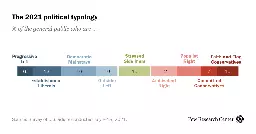
> This is the Center’s eighth political typology since 1987, but it differs from earlier such studies in several important ways. It is the first typology conducted on Pew Research Center’s nationally representative American Trends Panel, which provides the benefit of a large sample size and the ability to include a wealth of other political data for the analysis, including the Center’s validated voter study.
> The four Democratic-oriented typology groups highlight the party’s racial and ethnic diversity, as well as the unwieldy nature of the current Democratic coalition. (For complete descriptions of all nine typology groups see Chapters 3-11; for profiles of the Democratic and Republican coalitions see Chapters 1 and 2 of this report.)
> They include two very different groups of liberal Democrats: Progressive Left and Establishment Liberals. Progressive Left, the only majority White, non-Hispanic group of Democrats, have very liberal views on virtually every issue and support far-reaching changes to address racial injustice and expand the social safety net. Establishment Liberals, while just as liberal in many ways as Progressive Left, are far less persuaded of the need for sweeping change.
> Two other Democratic-aligned groups could not be more different from each other, both demographically and in their relationship to the party. Democratic Mainstays, the largest Democratic-oriented group, as well as the oldest on average, are unshakeable Democratic loyalists and have a moderate tilt on some issues. Outsider Left, the youngest typology group, voted overwhelmingly for Joe Biden a year ago and are very liberal in most of their views, but they are deeply frustrated with the political system – including the Democratic Party and its leaders.
> The four Republican-oriented groups include three groups of conservatives: Faith and Flag Conservatives are intensely conservative in all realms; they are far more likely than all other typology groups to say government policies should support religious values and that compromise in politics is just “selling out on what you believe in.” Committed Conservatives also express conservative views across the board, but with a somewhat softer edge, particularly on issues of immigration and America’s place in the world. Populist Right, who have less formal education than most other typology groups and are among the most likely to live in rural areas, are highly critical of both immigrants and major U.S. corporations.
> Ambivalent Right, the youngest and least conservative GOP-aligned group, hold conservative views about the size of government, the economic system and issues of race and gender. But they are the only group on the political right in which majorities favor legal abortion and say marijuana should be legal for recreational and medical use. They are also distinct in their views about Donald Trump – while a majority voted for him in 2020, most say they would prefer he not continue to be a major political figure.
> The only typology group without a clear partisan orientation – Stressed Sideliners – also is the group with the lowest level of political engagement. Stressed Sideliners, who make up 15% of the public but constituted just 10% of voters in 2020, have a mix of conservative and liberal views but are largely defined by their minimal interest in politics.
Political Typology Quiz: Where do you fit in the political typology? Are you a Faith and Flag Conservative? Progressive Left? Or somewhere in between?
Take our quiz to find out which one of our nine political typology groups is your best match.
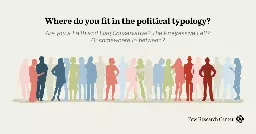
> Take our quiz to find out which one of our nine political typology groups is your best match, compared with a nationally representative survey of more than 10,000 U.S. adults by Pew Research Center. You may find some of these questions are difficult to answer. That’s OK. In those cases, pick the answer that comes closest to your view, even if it isn’t exactly right.
